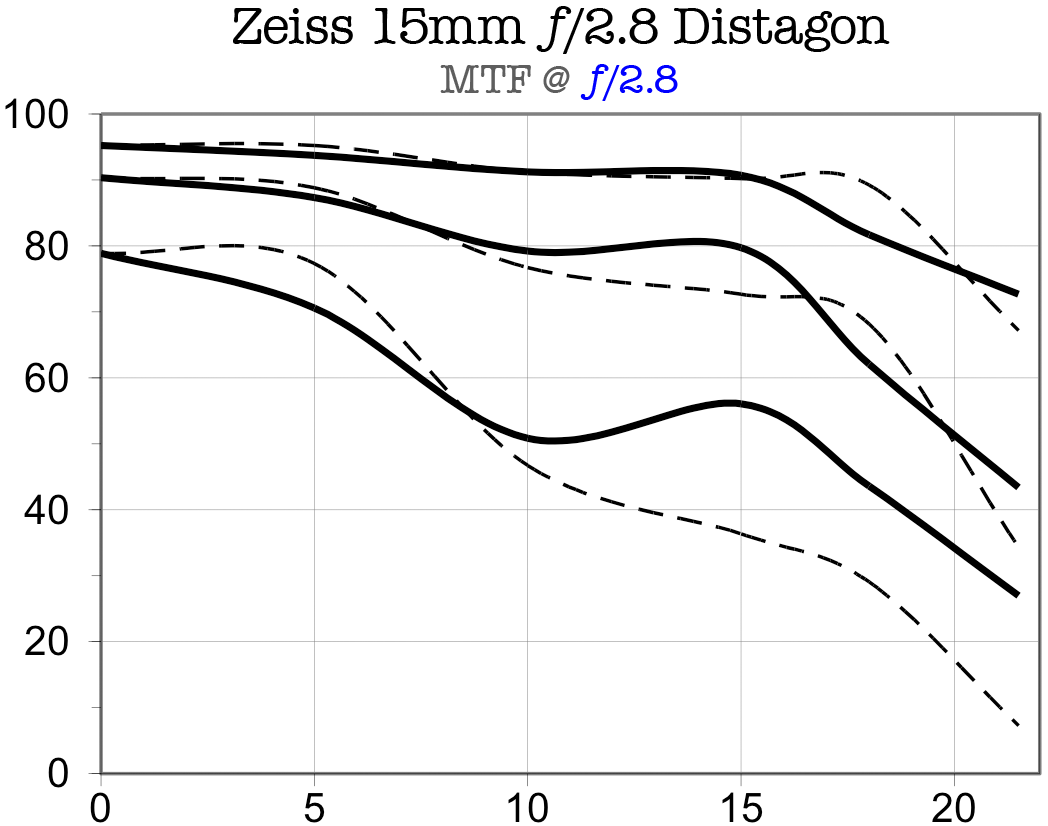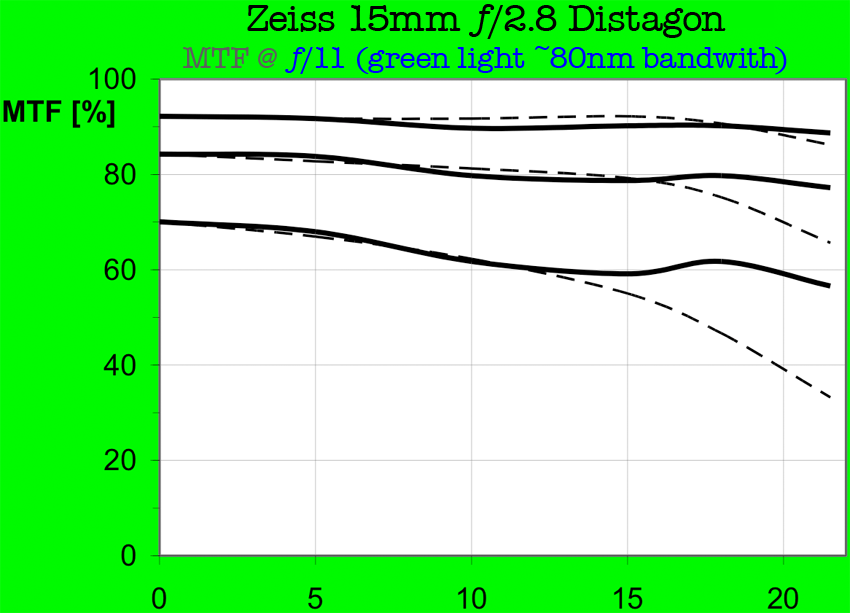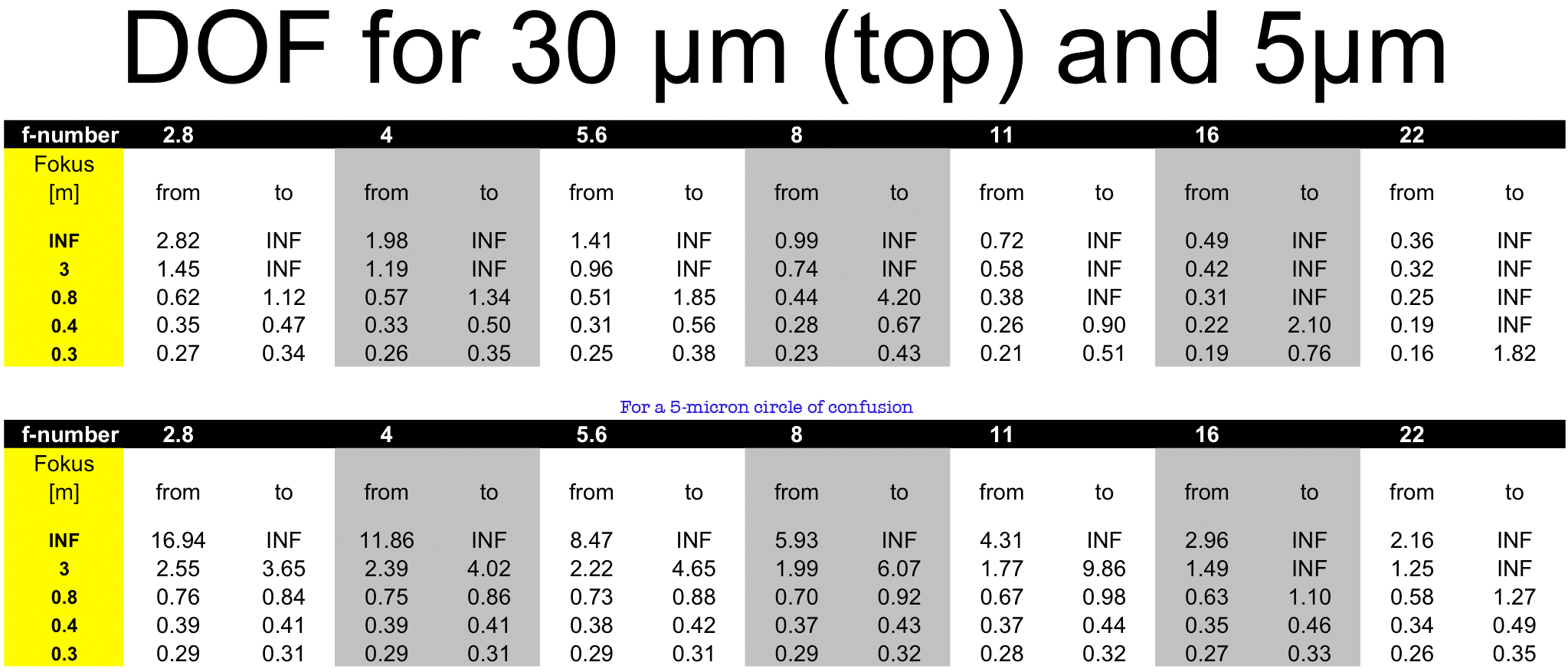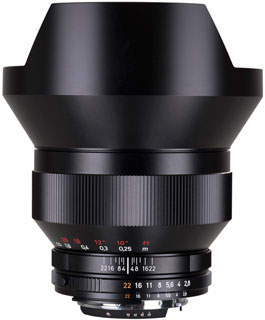
|

$220 SAVE $130 = 37.0% Western Digital 16.0TB Western Digital Ultrastar DC HC550 3.5-in… in Storage: Hard Drives
|

|

|

|

|
Zeiss 15/2.8 Distagon Q&A — Optical Performance, MTF, Field Curvature
Related: field curvature, wide angle, Zeiss, Zeiss 15mm f/2.8 Distagon, Zeiss Distagon, Zeiss DSLR Lenses, Zeiss Lenses
This is one of several pages resulting from the March 13, 2012 discussion with Staff Scientist Dr. Hubert Nasse. See the original list of questions.
These pages are a summary of the discussion based on notes taken, and as reviewed by Dr. Nasse. Bracketed comments [ ] are editorial in nature.
Flare control is really outstanding, and distortion is a low 2% barrel distortion.
MTF and field curvature
There is a rapid onset of field curvature right around the edges, but MTF for 10 lp/mm remains very good in the corners, just not for fine detail. There can be some individual sample variation as to the corners.
Field curvature changes slightly with aperture, especially with wide angle lenses. With the 15/2.8 Distagon, field curvature explains why the MTF for the corners at f/5.6 for fine structures is less good than wide open at f/2.8. Stopping down to f/8 improves the corner sharpness via depth of field. [Field shots confirm this, also the subject matter distance relative to the focus distance might mean some corner blur, or very little].
Dr. Nasse explains:
That the corners are not at their peak performance wide open is very normal for all wide and fast lenses, macro lenses and tele lenses are the main exception.
Many fast wide-angle lenses and many wide zooms have a correction style where MTF is high and field quite flat up to about 15-17mm image height, and then the image surface suddenly curves backwards rapidly. This is visible in the standard MTF presentations in the sudden drop of all lines above this critical image height.
All this is quite mild in the Distagon T* 2,8/15.
Focus shift
There is very little focus shift with the 15/2.8 Distagon. My field tests show that it can be ignored as an issue for practical photography. Dr. Nasse states:
This statement can definitely be confirmed.
MTF graphs
See Making Sharp Images for how to interpret MTF charts.
Dr. Nasse states:
Measured MTF data in white light at taking distance “Infinity”. This is a typical sample for most of the pre-series samples I have seen. This first f-stop from 2.8 to 4 is practically invisible, so stopping down will just increase safety with respect to focus error and will slightly increase the depth of field (just close to the centre – see page 2). The bump at 10mm image height is slightly deeper than in the computation. Since it is caused by deformation of the image surface this is a normal deviation between ideal theory and built lenses.
At f/5.6 corners should be quite acceptable, at least the contrast is very high; best detail is rendered from f/8.
At f/11 the curves look like from many macro lenses, except from the tangential loss towards the edges which is caused by the residual lateral chromatic aberration. It is small but not zero in such a very wide one. Tangential MTF is further improved when one measures with a more narrow spectrum – green light with about 80nm bandwidth.

See comments above; this is a graph at f/11 using ~80nm bandwidth of green light.

Close-up performance
In the old days, focusing 2 meters or close degraded sharpness quite badly in highly asymmetric retrofocus lens types. Then there were certain manual close-focus designs, with a separate “close focus” adjustment, but watch out if forgetting to adjust back to infinity!
With longer backfocal distance (retrofocus) designs, there is more of a need to compensate for close focus sharpness. The 15/2.8 Distagon has nicely solved the quality / distance quality issue with minimal sacrifice to image quality:
- 15/2.8 Distagon has slight decrease in MTF at ~0.3 meters @ 1:25.
- 15/2.8 Distagon degrades more in tangential resolution at close range 1:9.
- At all other distances the image quality remains very high.
High capacity, high-performance fault-tolerant storage for photography and video.
Non-RAID or RAID-0/1/4/5/10.
Capacities up to 72 Terabytes!
Depth of field
High resolution digital cameras now have photosite sizes smaller than 5 microns. For peak sharpness from high performance lenses like the Zeiss 15mm f/2.8 Distagon, a more discerning standard might be considered using 5-micron circle of confusion.

Seagate 22TB IronWolf Pro 7200 rpm SATA III 3.5" Internal NAS HDD (CMR)
SAVE $100


















